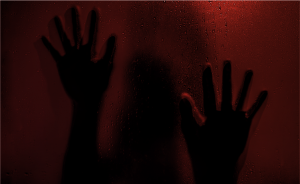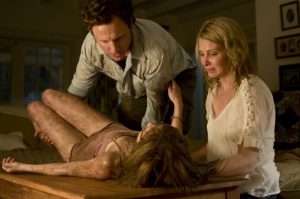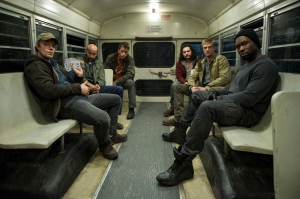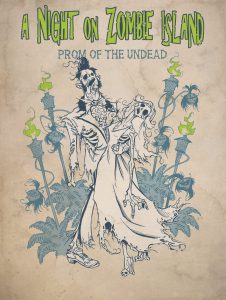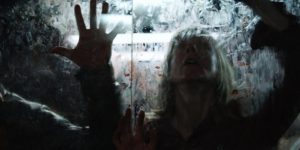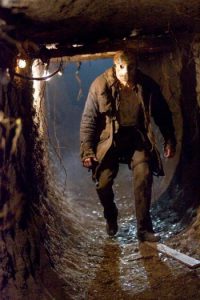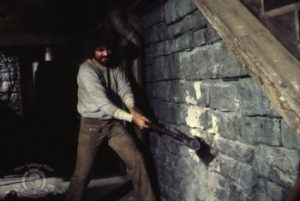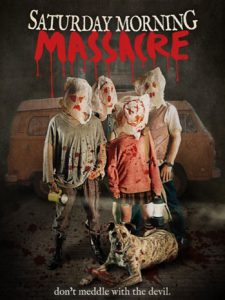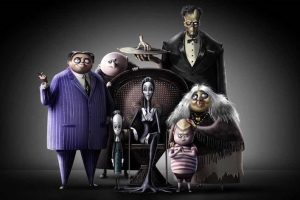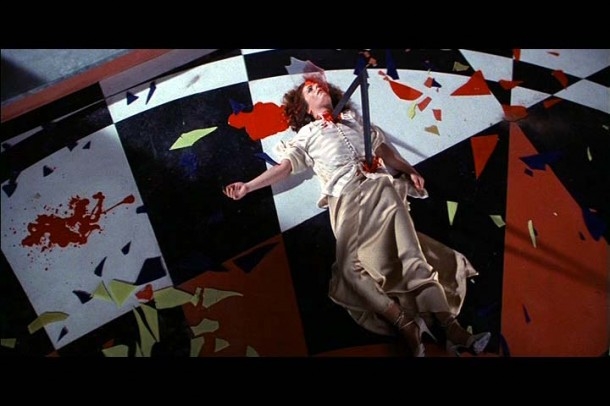
Top Ten Horror Film Scores
Horror movies would be nowhere without the music. There to amp up the scares and punctuate the chase, horror scores are vital in crafting an effective film. So for your listening pleasure, here are the top ten horror film scores. Kick back with some vintage headphones and enjoy the spooky ride.
Suspiria
Dario Argento’s surreal masterpiece is unforgettable, but try to imagine it without that inimitable Goblin soundtrack? Next to impossible, huh? That’s the sign of an effective horror score: so inextricably mingled with the terror that one simply cannot exist without the other. With its intensely beautiful melodies–and random lyrics thrown in just to enhance the off-putting aura–the Suspiria score is one-of-a-kind in the best possible horror way. And even without the Technicolor blood, Goblin’s theme song makes for a macabrely fun listen. A Me Decade accomplishment every way you look at it.

Phantasm
As one good turn inspires another, the score for Phantasm was heavily influenced by Goblin. The electronic sound of the 1978 mindbender is an exercise in strident melodies, but when there are evil tall men and shrunken minions in cloaks, no other tunes will do. Fred Myrow and Malcolm Seagrave might not be household names, but their Phantasm score remains one of the most memorable journeys into graveyard mayhem. Because as we all know, metal spheres with blades are always scarier when set to music.

Halloween
My mother and I were recently talking horror movies (because my mom is super awesome and knows her stuff when it comes to the genre). Without her being aware I was in the throes of drafting an article about horror film scores, she commented something along the lines of “Every John Carpenter soundtrack sounds the same. It’s good, but they’re all interchangeable.” Now I, of course, respectfully disagreed, but that being said, good ol’ mom does have a little bit of a point. Consequently, I chose only one film to represent Carpenter’s oeuvre. And while I have a real soft spot for the creepy music of The Thing (which was actually a collaboration between Carpenter and legendary film composer Ennio Morricone), Halloween is the slasher masterpiece that started it all, so it’s the obvious choice. The behind-the-scenes story goes that Carpenter screened the film with no soundtrack and quickly realized it wasn’t remotely scary. One laborious trip into the studio later, and he had a classic.

Near Dark
Remember back in the day when Tangerine Dream ruled when it came to film soundtracks? Oh, to travel back to the technologically simplistic days of the 1980s when a synthesizer and a Casio keyboard were all you needed to sound amazing and futuristic. Recorded in Berlin–with director Kathryn Bigelow in the studio during production–the score for the Oklahoma-set Near Dark is at once jarring and lilting, making it perhaps the most lethally beautiful dust storm you’ll ever meet.

Candyman
During the genesis of these lists, there is oftentimes one film in particular around which I construct the entire idea. The unnervingly lovely Philip Glass score from Candyman was the centerpiece of this week’s article. According to the lore behind the film, in order to persuade renowned composer Glass to craft the haunting music for the film, director Bernard Rose omitted details about just how gore-laden the finished project would be. Upon release, Glass was not entirely thrilled that he had scored what he deemed a conventional horror movie. However, he eventually came around–at least somewhat–as he added a few tracks to the Candyman II score and ultimately released the music–first on CD in 2001 and then on vinyl last year. Better late than never.

The Exorcist
The horror movie score that introduced the word “tubular” into the creeptastic vernacular. The score for the 1973 celluloid bastion of demonic possession is a bit of a mishmash and includes Mike Oldfield’s legendary “Tubular Bells”, which was released independently from the film’s soundtrack and was incidentally on the first ever album from Virgin Records. Another random research note: director William Friedkin later commented that he would have selected Tangerine Dream to score The Exorcist if he had heard their music sooner. Why, tubular bells! You suddenly sound so Reagan-era synth!

The Shining
Proving the value of the less is more aesthetic, the score for The Shining makes the most of every note, sometimes with no more than simple discordant chords during otherwise banal establishing shots. The original soundtrack for the film was scrapped after it didn’t pass muster with capricious genius Stanley Kubrick. Ultimately, there is empty silence as often as there is music, and that choice undoubtedly enhances the omnipresent terror of the Overlook Hotel. Room 237 please.

M
While we’re on the topic of “less is more”, how about a film with next to no soundtrack other than one classical tune? Consider exhibit A, er, M. The Fritz Lang masterpiece makes such effective use of Edvard Grieg’s Peer Gynt that the lovely song almost becomes nausea-inducing even when there’s no murderous Peter Lorre whistling it. And by the way, Peter Lorre actually couldn’t whistle, so that was Lang’s wife (and co-screenwriter) Thea von Harbou doing the soundtrack work for him.

Jaws
When my goddaughter was three, we introduced her to Jaws. This was a major initiation into the family. And despite being easily scared, she took to the film with aplomb. No matter where she was playing in the house, the moment John Williams’ inimitable score came on the television, she would stop what she was doing and announce “There’s that dangerous music again.” That’s the visceral power of melody. You can hear it from another room and know instantly what it means. So even if Bruce the Shark was less than cooperative on the set of the 1975 horror classic, that so-called dangerous music more than makes up for it.

Psycho
When it comes to horror movie scores, Psycho is truly the one to beat. After all, nothing slices straight through the public consciousness and stays there for over half a century quite like violins and Bernard Hermann. Originally, the shower scene was going to be silent. Then it was going to have jazz music (because really, why not?). But Hermann’s orchestral arrangement ultimately persevered, and celluloid history is forever changed–and all the better for it.

What’s your favorite horror film score? Let me know in the comments below!



